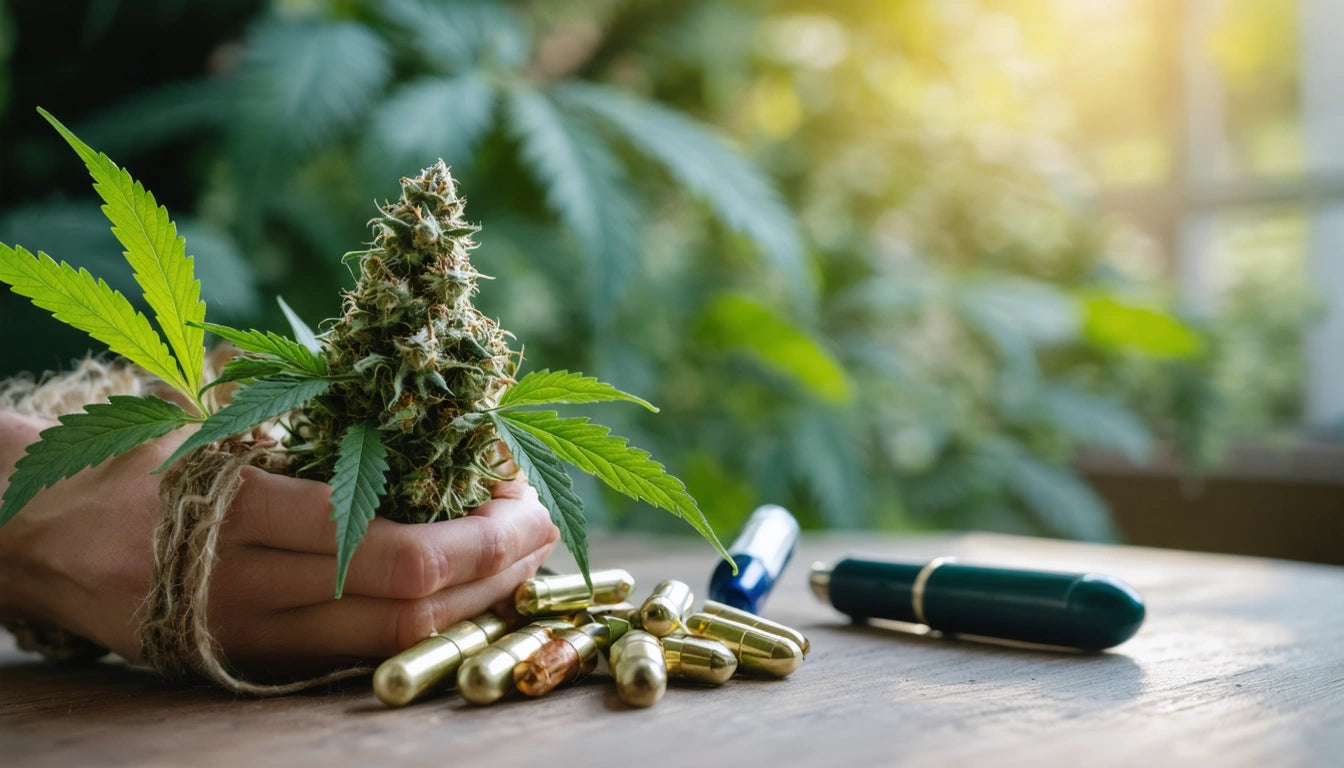Table of Contents
- THC Detection Windows: Blood, Urine, Hair, and Saliva
- Factors Affecting THC Retention in the Body
- Understanding the THC Metabolism Process
- Occasional vs. Regular Users: Detection Timeline Differences
- Methods for Potentially Reducing THC Detection Time
- Advancements in THC Research and Testing Methods
How Long Does THC Stay in Your System?
THC, or tetrahydrocannabinol, is the primary psychoactive compound in cannabis that can remain detectable in the body long after its effects have worn off. Understanding how long THC stays in your system is crucial for consumers who may face drug testing or want to know more about how cannabis affects their body over time.
THC Detection Windows: Blood, Urine, Hair, and Saliva
Detection times vary significantly depending on the testing method used. Each test has different sensitivities and detection windows for identifying THC or its metabolites.
Blood Testing
THC is detectable in blood for a relatively short period compared to other testing methods. For occasional users, THC typically remains in the bloodstream for 1-2 days. Regular users may test positive for 7 days or longer, as explored in this detailed blood detection guide.
Urine Testing
Urine tests are the most common method for detecting THC. The detection window varies based on usage frequency:
- Single use: 3-5 days
- Moderate use (4 times/week): 5-7 days
- Daily use: 10-15 days
- Heavy, chronic use: 30+ days
For more specific information about urine detection timelines, this resource provides comprehensive insights.
Hair Testing
Hair follicle tests have the longest detection window, potentially identifying THC metabolites for up to 90 days. These tests are less common but can detect even occasional use over a much longer period than other methods.
Saliva Testing
Oral fluid tests typically detect THC for 24-72 hours after use, making them useful for identifying recent consumption rather than historical use.
Factors Affecting THC Retention in the Body
Several factors influence how long THC stays in your system:
Body Fat Percentage
THC is lipophilic, meaning it binds to fat molecules in the body. People with higher body fat percentages may retain THC metabolites longer. This explains how long THC is stored in your fat and why it can be detected weeks after consumption.
Metabolism Rate
Individual metabolic rates affect how quickly the body processes and eliminates THC. Faster metabolisms generally clear THC more quickly than slower ones.
Consumption Frequency and Quantity
Perhaps the most significant factor is how often and how much cannabis is consumed. Heavy, regular users can have detectable levels of THC metabolites for significantly longer periods than occasional users.
Product Potency
Higher-potency products introduce more THC into the system, potentially extending detection times. When storing these products, many consumers use specialized storage solutions that maintain potency while preventing degradation, which can affect how the body processes THC.
Understanding the THC Metabolism Process
When cannabis is consumed, THC enters the bloodstream and is quickly distributed to tissues throughout the body. The liver metabolizes THC into various compounds, primarily 11-OH-THC (which is also psychoactive) and then to THC-COOH (which is not psychoactive but is what most drug tests detect).
The Half-Life of THC
The half-life of THC refers to how long it takes for half of the substance to be eliminated from the body. THC has a variable half-life depending on usage patterns:
- Occasional users: 1.3 days
- Regular users: 5-13 days
This explains why THC levels go down at different rates for different users, as detailed in this analysis of THC elimination.
Occasional vs. Regular Users: Detection Timeline Differences
The frequency of cannabis use dramatically affects how long THC remains detectable:
Single-Use Detection
After a single use, THC metabolites are typically detectable for:
- Blood: 1-2 days
- Urine: 3-5 days
- Saliva: 1-3 days
Regular Use Detection
For regular users (several times per week), detection windows extend to:
- Blood: 7+ days
- Urine: 10-21 days
- Saliva: 1-7 days
Heavy, Chronic Use
Daily, heavy users may test positive for:
- Blood: Up to 30 days
- Urine: 30-90 days
- Saliva: Up to 30 days
These extended timelines explain why THC stays in the system so long for regular consumers.
Methods for Potentially Reducing THC Detection Time
While no method guarantees faster elimination, certain approaches may help:
Hydration
Proper hydration supports overall metabolism but won't significantly accelerate THC elimination. Excessive water consumption before a urine test may dilute the sample but won't remove THC from the system.
Exercise
Regular exercise may help burn fat cells where THC is stored, potentially speeding up elimination. However, exercise right before a test might temporarily increase blood THC levels as stored THC is released from fat.
Diet
A healthy diet low in fat and high in fiber may support the body's natural detoxification processes. However, dramatic dietary changes have limited impact on established THC detection windows.
Time
Time remains the most reliable factor in clearing THC from the system. There are no scientifically proven methods to significantly accelerate the natural elimination process.
Advancements in THC Research and Testing Methods
Research continues to evolve regarding how THC interacts with the body and how testing methods are improving:
More Accurate Detection Windows
Newer research is helping establish more precise detection windows based on consumption patterns, delivery methods, and individual factors. For instance, studies on THC effects duration are providing better insights into both psychoactive timelines and detection periods.
Alternative Testing Approaches
Researchers are developing tests that can better distinguish between recent use and past use, which could have significant implications for workplace and roadside testing policies.
Understanding how long THC stays in your system helps consumers make informed decisions about cannabis use, especially when considering potential testing situations. While detection times vary widely based on individual factors, consumption patterns remain the most significant predictor of how long THC will be detectable in the body.











Leave a comment
All comments are moderated before being published.
This site is protected by hCaptcha and the hCaptcha Privacy Policy and Terms of Service apply.